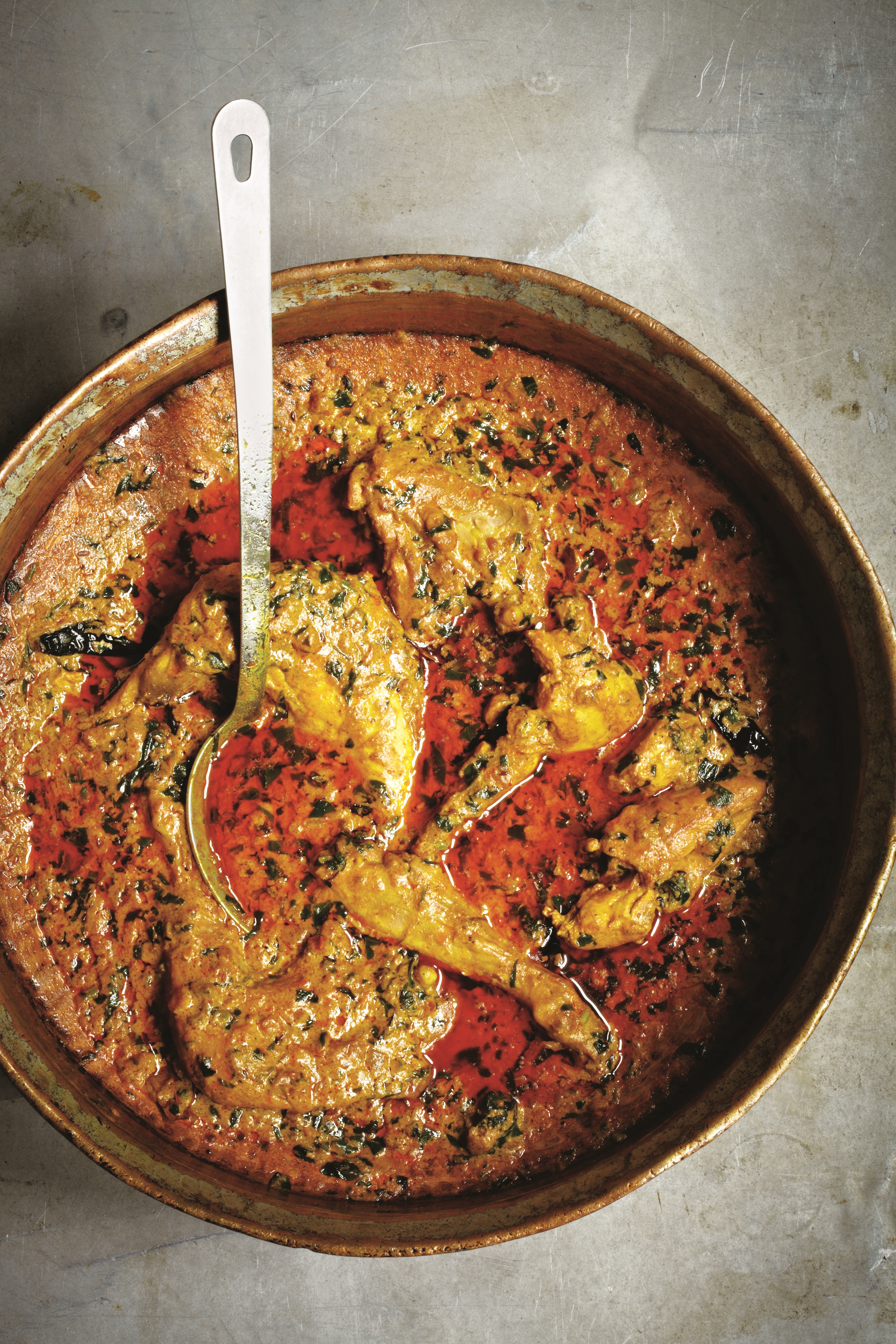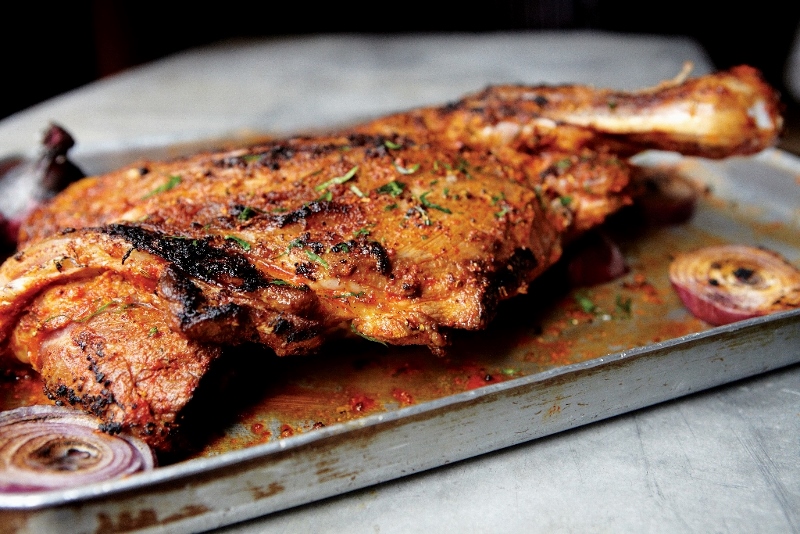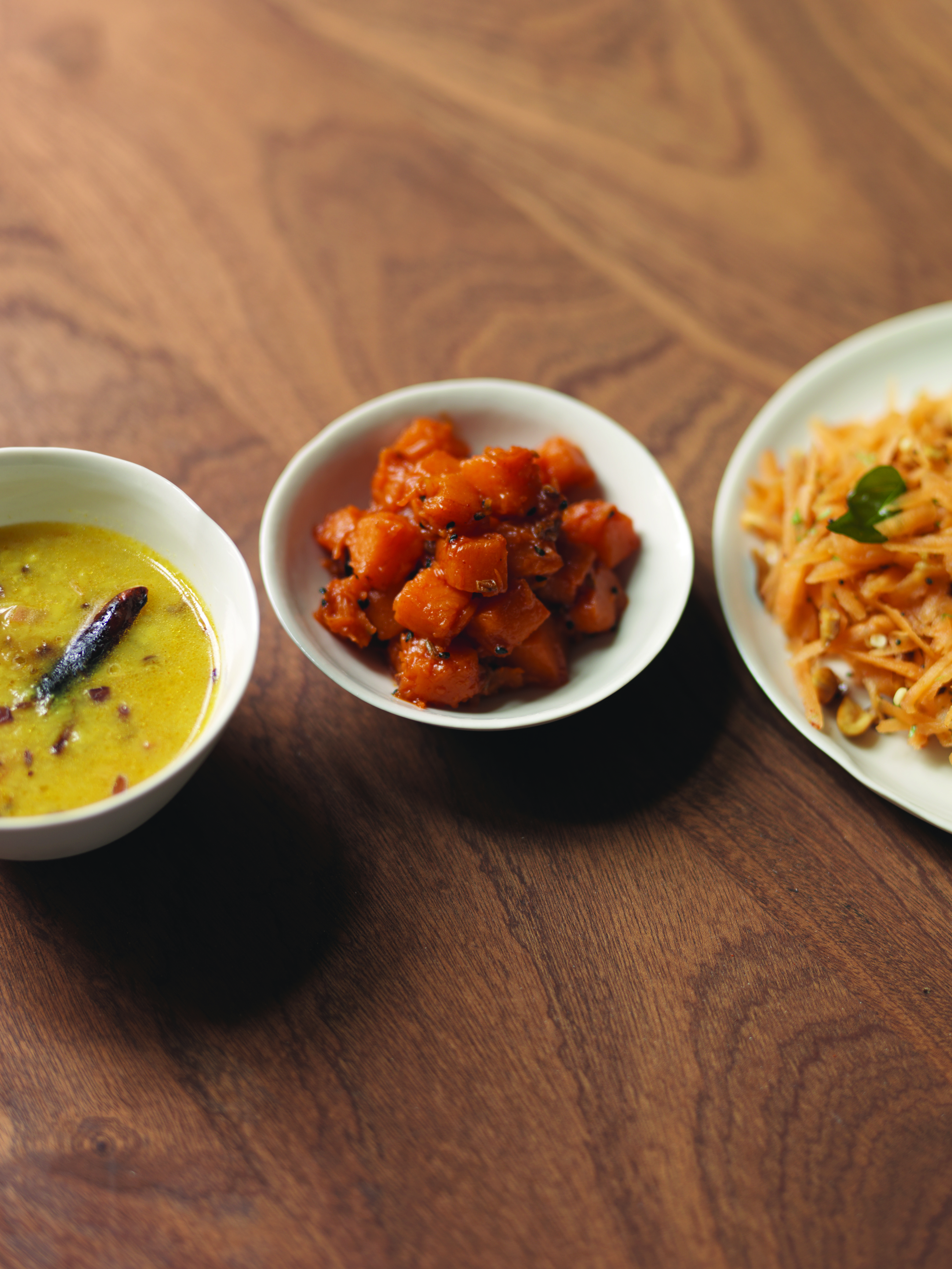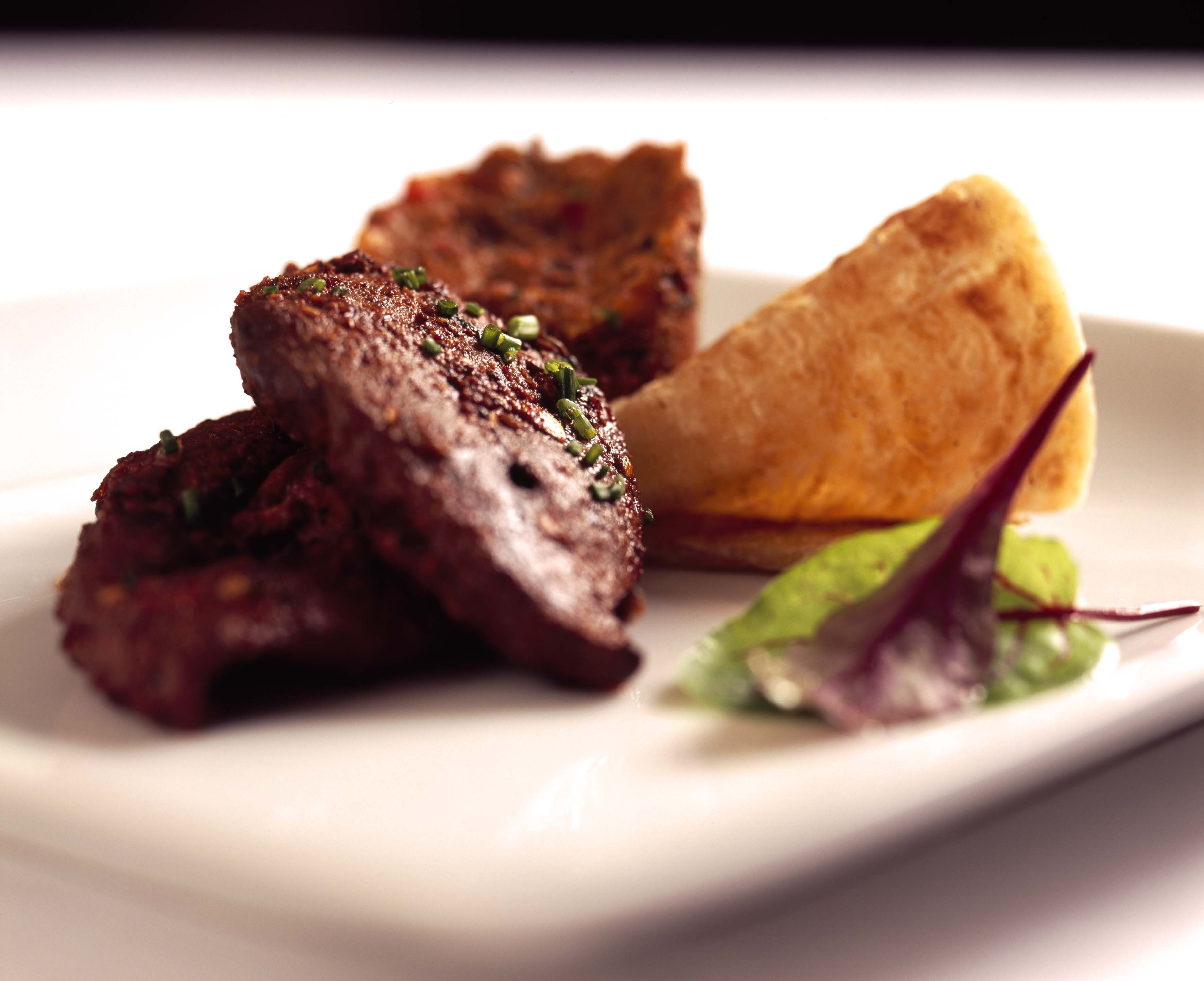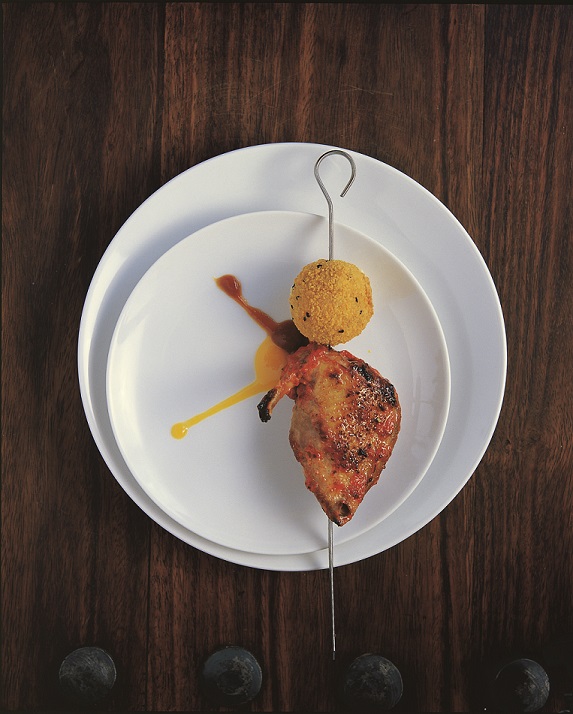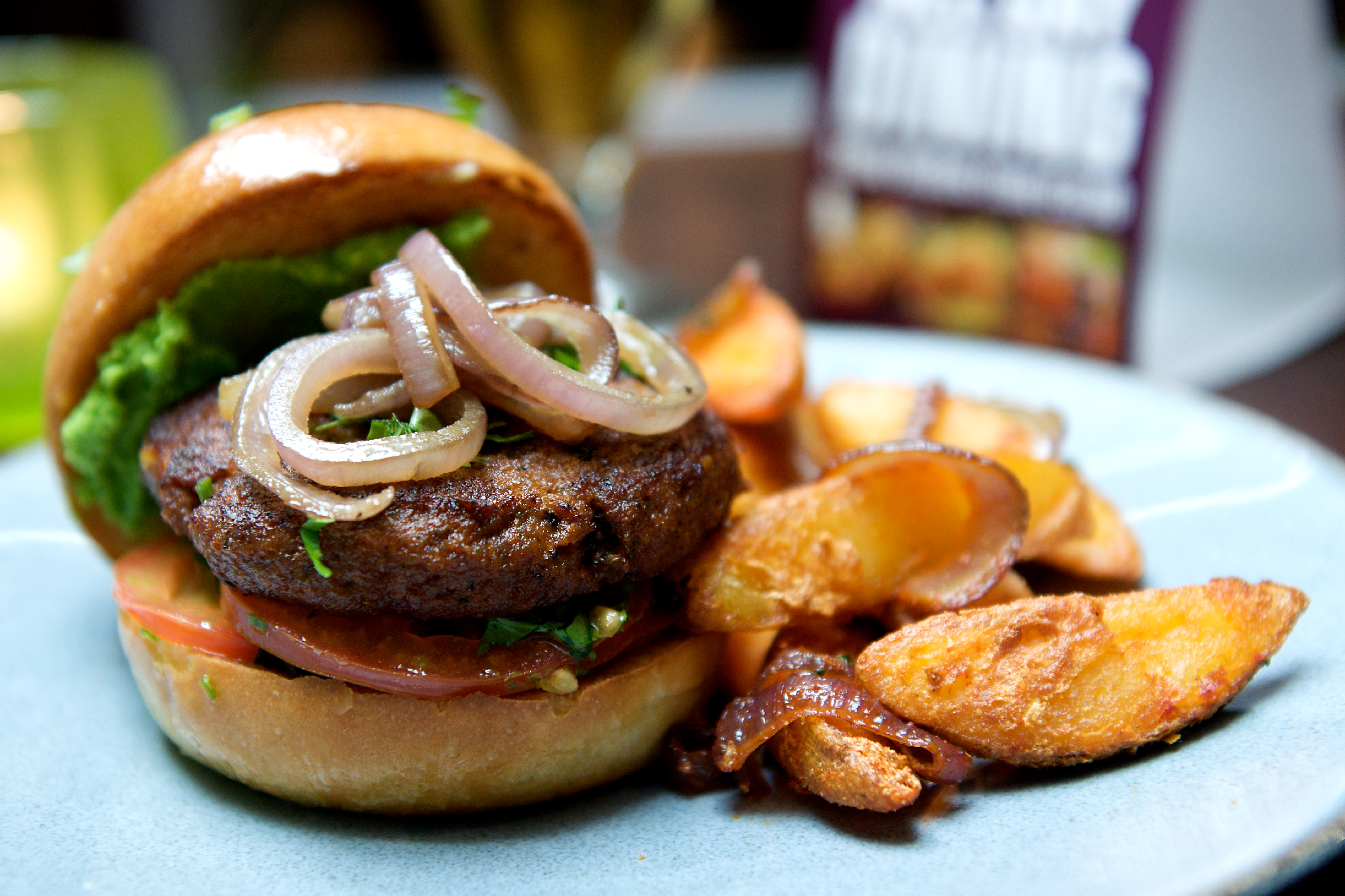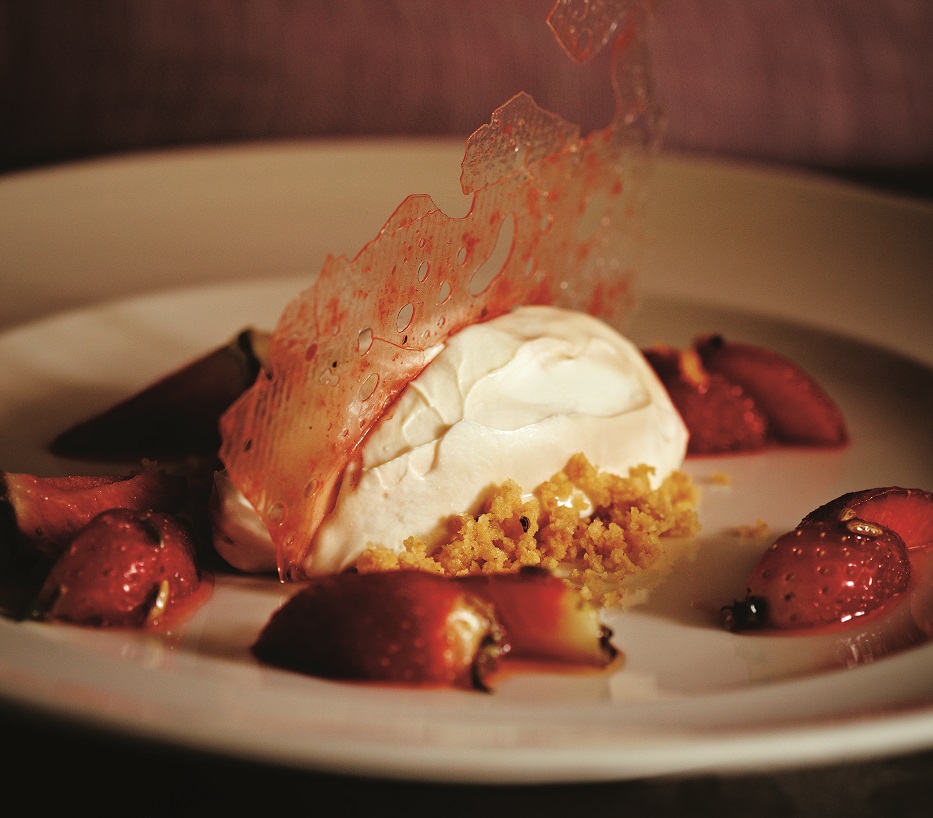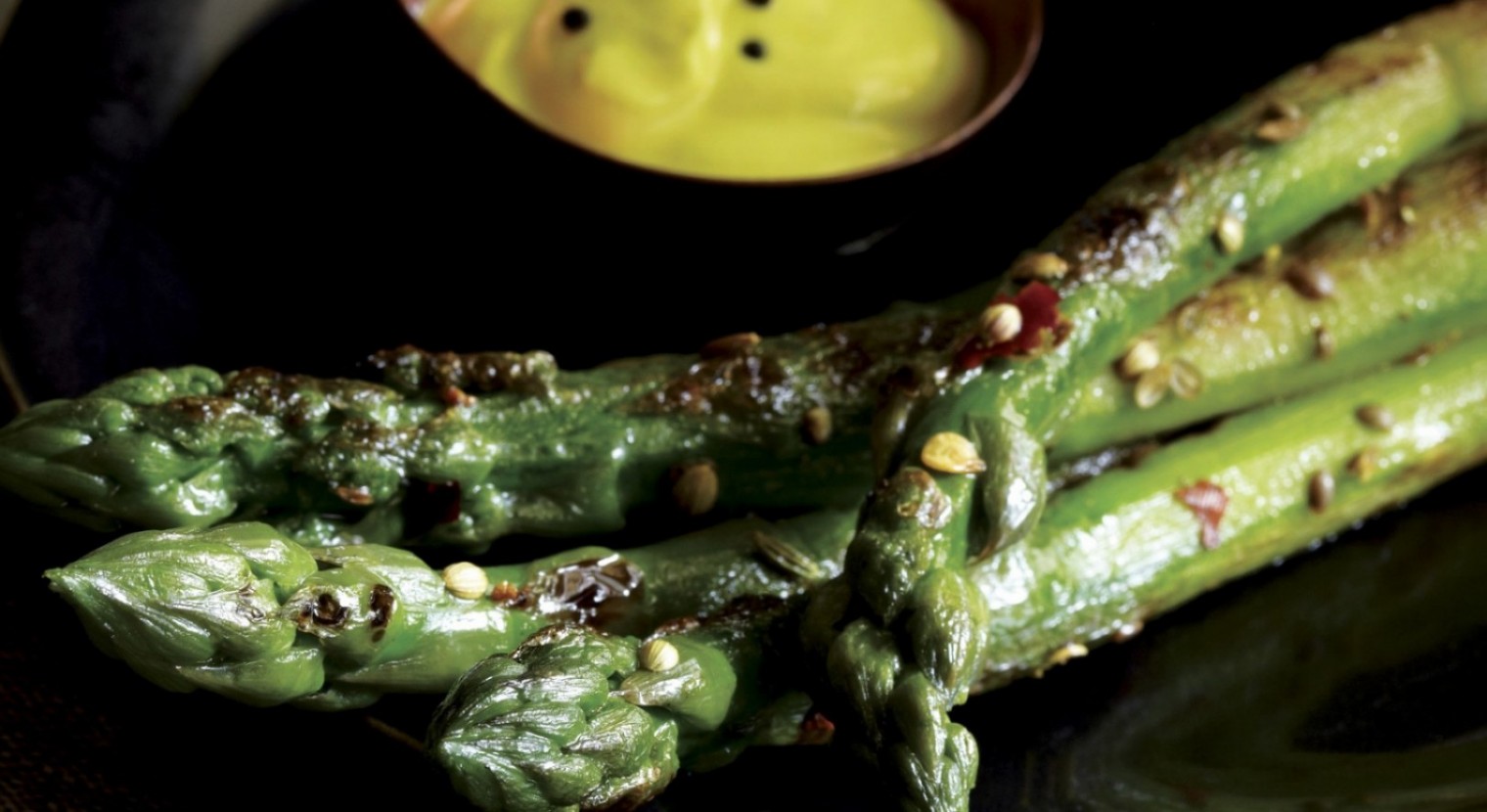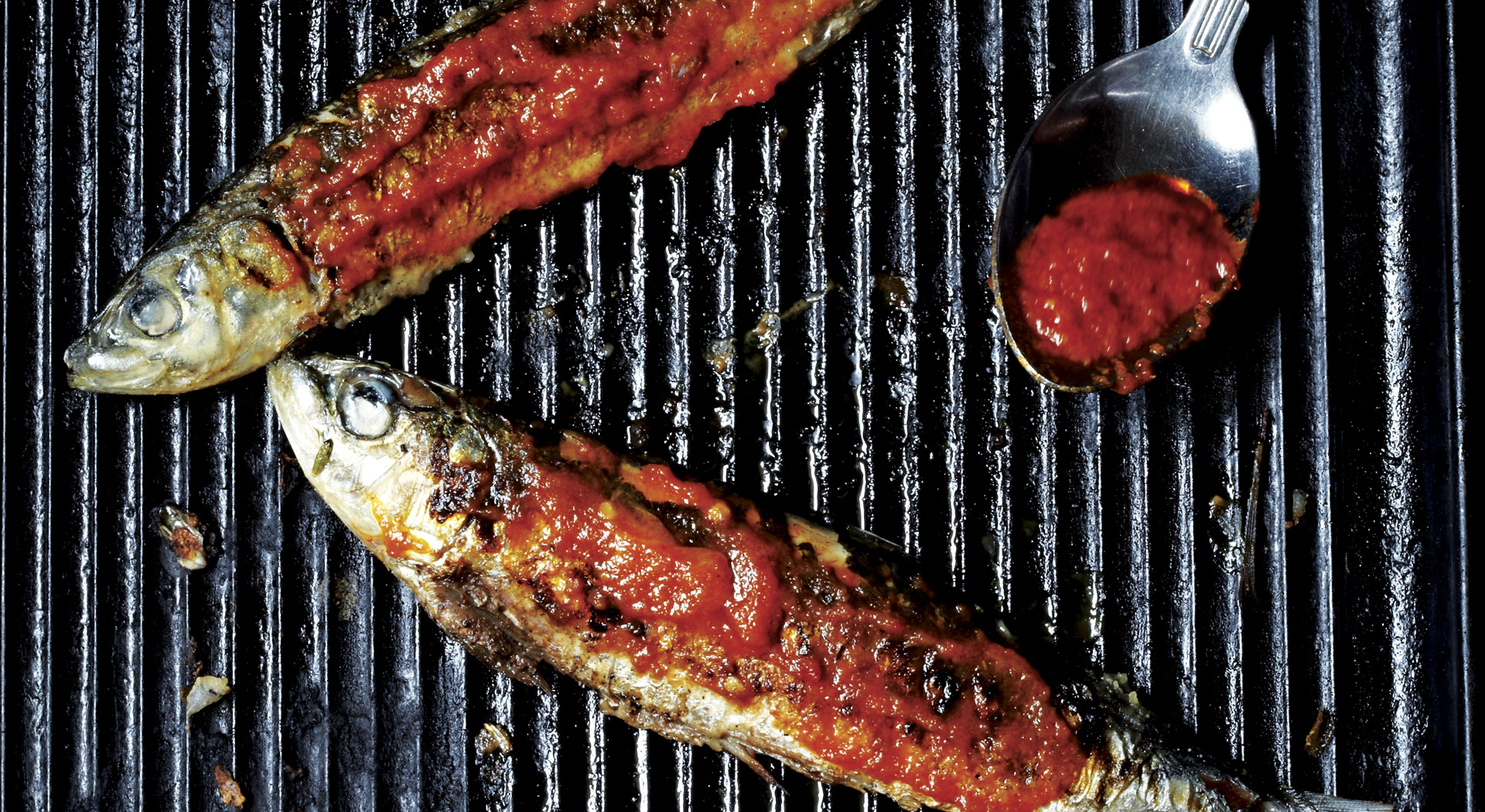January- Guinea Fowl
Jungle Curry of Guinea Fowl with Fresh Fenugreek
This is a very basic, rustic curry that could be made with any kind of fowl but works particularly well with free-roaming, older birds. Their meat is slightly tougher than that of young birds but there is so much more flavour. I’m using guinea fowl but you could easily replace with chicken if you prefer.
In the past, when people cooked this outdoors over a wood fire with very basic implements, the spices would often be added whole and the vegetables roughly cut, hence the name jungle curry
Serves 4
5 tablespoons vegetable or corn oil
5 cloves
2.5cm (1-inch) piece of cinnamon stick, broken in half
2 green cardamom pods
½ teaspoon black peppercorns
1 bay leaf
1 teaspoon cumin seeds
4 onions, finely chopped
1 tablespoon chopped garlic
1 x 1.2–1.5kg whole guinea fowl, skinned and cut into 8 pieces
1 tablespoon ginger garlic paste
2 teaspoons salt
1½ teaspoons red chilli powder
1 teaspoon red chilli flakes
1 teaspoon turmeric
1 teaspoon ground cumin
1 teaspoon ground coriander
4 tomatoes, chopped
2 green chillies, chopped
500ml water
2 tablespoons chopped green coriander
¼ teaspoon garam masala
½ teaspoon dried fenugreek leaves, crumbled between your fingers
juice of ½ lemon
Heat the oil in a large, heavy-based pan, add the whole spices and bay leaf and let them splutter. Once the spices change colour, add the onions and garlic and sauté until golden brown. Add the guinea fowl pieces and stir-fry for 6–8 minutes over a high heat, until browned at the edges. Add the ginger paste, salt, turmeric, chilli powder, chilli flakes, cumin and coriander and cook, stirring, over a high heat for 2–4 minutes. Add the tomatoes and cook for 8–10 minutes, stirring constantly to ensure that the spices do not stick to the bottom of the pan.
Once the oil starts to separate out from the masala round the edges of the pan, add the green chillies, and reduce the heat and cook, stirring frequently, till the liquid comes to the boil again. Add the water, bring to the boil, and then simmer over a low heat for 10 minutes or until the guinea fowl is fully cooked. Add the garam masala, dried fenugreek and lemon juice. Serve with rice or chapattis.

